As a website owner, you strive for your online platform to leave a lasting impression on visitors. You want them to effortlessly navigate and engage with the content, ensuring a positive user experience. To achieve this, it is essential to prioritize optimizing the various aspects of your website.
Fine-tune Navigation: A well-structured and intuitive navigation system acts as a roadmap for your visitors, guiding them through your website. By organizing your content with clear headings, categories, and subcategories, you can create a seamless browsing experience.
Responsive Design: Catering to the diverse range of devices used to access the internet is crucial to ensuring a user-friendly experience. Implementing responsive design techniques allows your website to dynamically adjust its layout and functionality according to the screen size, enhancing usability across desktops, tablets, and mobile devices.
Engaging Content: Provide valuable and compelling content that not only captivates visitors but also encourages them to interact with the website. Incorporate multimedia elements such as images, videos, and infographics to convey information effectively, while ensuring that the text is concise, informative, and easy to read.
Streamlined Loading Speed: Time is of the essence in the digital world, and users expect websites to load quickly. Optimize your website's loading speed by compressing images, minifying JavaScript and CSS files, and leveraging browser caching. Ensuring swift performance will prevent visitors from getting frustrated and abandoning your site.
10 Effective Ways to Enhance User Engagement on Your Web Platform
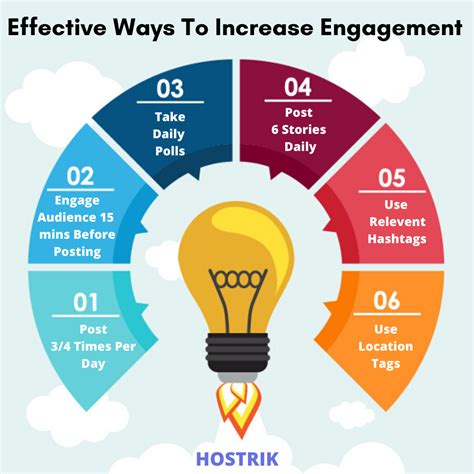
In order to create a delightful experience for visitors to your online domain, it is essential to focus on optimizing their interaction and satisfaction. Here are 10 powerful techniques to boost user engagement on your digital space:
- Concentrate on streamlining navigation: Simplify access to different sections of your website by ensuring intuitive and user-friendly navigation. Enhance the ease and efficiency of browsing for your visitors.
- Prioritize website loading speed: Improve the loading time of your web pages. Swift loading not only prevents user frustration but also contributes to higher search engine rankings, ultimately attracting more organic traffic.
- Optimize for mobile devices: With the majority of web users accessing websites via smartphones and tablets, it is crucial to make your web design responsive and mobile-friendly. Ensure seamless navigation and readability on smaller screens.
- Create compelling and relevant content: Craft engaging and informative content that aligns with the expectations and needs of your target audience. Valuable content keeps users hooked, encourages them to explore further, and increases the likelihood of repeated visits.
- Utilize clear and concise calls-to-action (CTAs): Guide visitors towards desired actions by using visually prominent and compelling CTAs. Ensure that they are clear, concise, and easily distinguishable to drive conversions and user engagement.
- Implement effective search functionality: Enable your users to quickly and effortlessly find the information they seek by incorporating a powerful and user-friendly search feature. This allows for a personalized experience, optimizing user satisfaction.
- Enhance website accessibility: Ensure that your website is accessible to individuals with disabilities, incorporating features such as alt text for images, adequate color contrast, and keyboard navigation. This inclusivity enhances user experience for all.
- Opt for clean and visually appealing design: Employ a visually appealing and clutter-free design that captivates users and portrays your brand identity effectively. A well-structured layout enhances user engagement and facilitates seamless navigation.
- Utilize social proof: Leverage the power of social proof by incorporating customer testimonials, reviews, ratings, and case studies. These elements build trust, credibility, and encourage visitors to engage more deeply with your website.
- Regularly analyze and improve user experience: Utilize website analytics tools to gain insights into user behavior and continuously optimize your platform accordingly. Regularly evaluate the efficacy of the implemented techniques and make necessary adjustments to enhance user experience constantly.
Boost Website Performance to Enhance User Satisfaction
In today's digital landscape, improving the speed and performance of your website is paramount for delivering a seamless and engaging user experience. A fast-loading website not only helps to capture and retain visitors' attention, but it also improves your site's search engine visibility and overall conversion rates. In this section, we will explore effective strategies to optimize your website's speed and enhance user satisfaction.
| Key Considerations | Optimization Techniques |
|---|---|
| Content Optimization | Minify HTML, CSS, and JavaScript files to reduce their size without sacrificing functionality. Compress and resize images to optimize file sizes. Implement lazy loading to load content only when needed. |
| Server Configuration | Choose a reliable hosting provider that offers fast server response times. Enable caching to store static content and reduce server load. Utilize a content delivery network (CDN) to distribute content geographically for faster delivery to users. |
| Code Efficiency | Eliminate unnecessary code, such as unused plugins or scripts. Optimize database queries to minimize execution time. Implement code minification and bundling to reduce file sizes. |
| Browser Rendering | Optimize CSS styling and remove unused styles to streamline rendering. Leverage browser caching to store resources locally for faster subsequent visits. Use asynchronous loading for JavaScript to prevent blocking page rendering. |
| Mobile Optimization | Ensure your website is mobile-friendly and responsive for a smooth browsing experience on various devices. Use mobile-specific optimizations, such as smaller image sizes and simplified designs, to improve load times on mobile networks. |
By implementing these website speed optimization techniques, you can significantly improve your site's performance and provide a better user experience. Remember, a speedy website not only delights users but also contributes to better search rankings and increased conversions.
Create a Clear and Intuitive Website Navigation
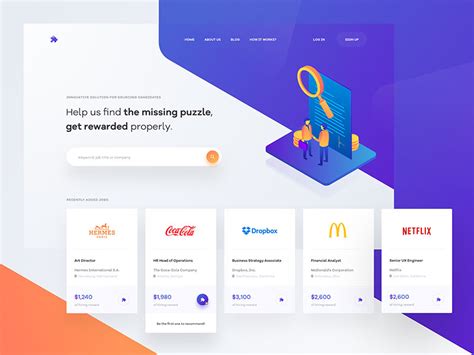
In order for your website to effectively engage and guide users, it is essential to create a navigation system that is both clear and intuitive. By ensuring that your website's navigation is easily understandable and user-friendly, you can enhance the overall browsing experience, maximize user satisfaction, and increase the likelihood of achieving your desired objectives. Here are some key strategies to consider when designing your website's navigation:
1. Streamline the Menu: Simplify your website's menu by organizing it in a logical and hierarchical manner. Utilize descriptive and concise labels for each menu item, ensuring that users can easily understand the purpose of each section or page. Avoid cluttering the menu with too many options, as this may overwhelm and confuse users.
2. Use Clear Navigation Labels: Choose clear and concise labeling for each navigation item. Instead of using vague terms, opt for specific and descriptive labels that accurately convey the content or purpose of each section. This will help users quickly identify the information they are looking for and navigate through your website seamlessly.
3. Incorporate Search Functionality: Implement a search bar prominently within your website's navigation. This allows users to directly search for specific content or products, reducing the time and effort required to find relevant information. Make sure the search feature is easily visible and accessible from all pages.
4. Provide Visual Cues: Incorporate visual cues, such as highlighting the current page or section in the navigation menu, to help users navigate through your website effortlessly. This provides users with a clear indication of their current location within your website and improves overall usability.
5. Optimize for Mobile Devices: Ensure that your website's navigation is responsive and easily adaptable to different screen sizes. With the increasing use of mobile devices for browsing, it is crucial to provide a seamless navigation experience on smartphones and tablets. Implement a mobile-friendly menu that is concise, easy to interact with, and compatible with touch gestures.
By implementing these strategies, you can create a clear and intuitive website navigation that enhances user experience, encourages exploration, and ultimately leads to higher engagement and conversion rates.
Implement Responsive Web Design for Seamless Mobile Compatibility
In the ever-evolving digital landscape, catering to users on various devices is of utmost importance. With the widespread usage of mobile devices, ensuring mobile compatibility has become a vital aspect of user experience. Responsive web design offers a solution to this challenge by allowing websites to adapt seamlessly to different screen sizes and resolutions.
Responsive web design optimizes the layout, content, and functionality of a website to provide an optimal viewing experience across a range of devices, including smartphones and tablets. By utilizing flexible grid layouts, resizable images, and fluid CSS styles, responsive websites can automatically adjust and reposition elements to fit different screen sizes.
By implementing responsive web design, you can enhance mobile compatibility by providing a consistent and user-friendly experience. Users no longer need to zoom in or scroll sideways to navigate through your website on their mobile devices, as the content will adjust and scale proportionally, ensuring readability and accessibility.
Responsive web design not only improves usability on mobile devices but also contributes to search engine optimization (SEO). As search engines prioritize mobile-friendly websites in their rankings, having a responsive design can boost your website's visibility and attract more organic traffic.
Furthermore, responsive web design simplifies maintenance and content management. With a single website that caters to all devices, you don't need to create separate versions or duplicate content. Updates and modifications can be made conveniently, as the layout and structure remain consistent across different devices.
Overall, by embracing responsive web design, you can create a more inclusive and satisfying user experience. Ensuring mobile compatibility is essential for reaching a wider audience, improving engagement, and staying ahead in the competitive digital landscape.
Creating User-Friendly Website Forms for Enhanced User Interaction
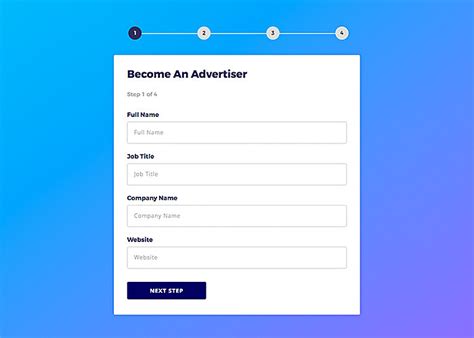
Establishing effective communication with your website visitors is essential for providing them with a seamless and satisfactory experience. One crucial aspect of achieving this goal is through the implementation of user-friendly website forms. These forms serve as the primary medium through which users interact with your website, making it essential to optimize their design and functionality.
By focusing on user-friendly website forms, you can enhance user engagement, increase conversion rates, and improve overall user satisfaction. Ensuring that your forms are intuitive, accessible, and visually appealing can significantly impact how users perceive your brand and interact with your website.
Begin by simplifying the form's layout and design, utilizing clear and concise labels and instructions to guide users through the process. Streamlining the form by removing any unnecessary fields or steps can minimize user frustration and encourage completion.
Another crucial consideration is optimizing the form for mobile users. With the increasing prevalence of smartphones and tablets, it is vital to ensure that your website forms are responsive and adapt seamlessly to different screen sizes. This mobile-friendly approach ensures a consistent user experience across all devices, increasing accessibility and convenience.
Additionally, implementing real-time validation and error handling can greatly enhance the user experience. Instantly informing users of any input errors and providing clear instructions on how to correct them can reduce frustration and prevent form abandonment.
Lastly, integrating social login options or enabling auto-fill functionality can further enhance the user-friendliness of your website forms. By offering alternative authentication methods and simplifying data input, you can save users time and effort, resulting in a more pleasant and efficient experience.
By paying attention to the user experience when designing and implementing website forms, you can create a more user-friendly and engaging environment that encourages interaction, boosts conversions, and leaves a positive impression on your visitors.
Creating Engaging and Relevant Content: A Key Element for Website Success
In the ever-evolving digital landscape, the importance of engaging and relevant content cannot be emphasized enough. The content on your website plays a crucial role in capturing the attention of visitors, keeping them engaged, and ultimately converting them into loyal customers. By focusing on creating content that resonates with your target audience, you can effectively establish a strong online presence and distinguish your website from competitors.
- Understanding Your Target Audience:
- Providing Valuable and Informative Content:
- Using Relevant Visuals:
- Creating Engaging Headlines and Subheadings:
- Encouraging User Interaction:
To create content that engages and resonates with your audience, it is essential to have a deep understanding of their needs, preferences, and expectations. Research your target audience's demographics, interests, and pain points to gain valuable insights that can inform your content creation strategy.
People visit websites to find information or solutions to their problems. By offering valuable and informative content, you can establish your website as a go-to resource in your industry. Share your expertise, provide in-depth guides, and share thought-provoking insights that address the specific needs of your target audience.
Visual elements such as images, videos, infographics, and interactive graphics can significantly enhance the engagement level of your content. Including relevant visuals can help convey your message more effectively, break down complex information, and make your content visually appealing, thereby keeping visitors hooked on your website.
The headline is often the first thing visitors notice, and it plays a crucial role in capturing their attention. Craft engaging headlines and subheadings that are concise, clear, and enticing. Use compelling language, incorporate power words, and create a sense of curiosity that compels visitors to explore further.
Creating content that encourages user interaction can greatly enhance the overall user experience. Incorporate opportunities for visitors to leave comments, ask questions, or share their thoughts. Enable social sharing buttons to make it easy for users to share your content with their network, thereby expanding your reach and fostering a sense of community.
By incorporating these strategies and constantly evaluating the feedback and behavior of your users, you can continuously improve the quality of your content and create a website experience that keeps visitors coming back for more.
Improving Website Accessibility for All Users
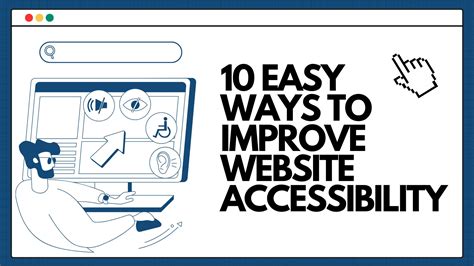
In this section, we will explore strategies to make your website more accessible and inclusive for a diverse range of users. Creating an accessible website ensures that all individuals, regardless of their abilities, can fully engage with your content and navigate through your site seamlessly.
1. Prioritize Clear and Concise Content
When creating website content, it is essential to use straightforward and concise language that is easy for all users to understand. Avoid using complex terminology or jargon that may confuse or exclude certain individuals. Instead, focus on delivering information in a simple and user-friendly manner.
2. Utilize Descriptive and Alternative Text for Images
For users who are visually impaired, descriptive alt text is crucial as it allows screen readers to provide an accurate description of the image. By including descriptive text, you can ensure that these users can understand the context and meaning of the visuals on your website.
3. Provide Keyboard Navigation Options
Not all users can rely on a mouse or touchpad to navigate a website. By implementing keyboard navigation options, you enable individuals who use assistive technologies or have limited mobility to browse your website effectively. Ensure that all interactive elements, such as buttons and links, can be easily accessed and navigated using only a keyboard.
4. Use Consistent and Intuitive Navigation
A consistent and intuitive navigation structure is vital for all users, including those with cognitive disabilities or difficulties in processing information. Implement a clear and organized menu system that is easy to understand and navigate, allowing users to find what they are looking for quickly.
5. Ensure Color Contrast and Readability
Consider users who may have visual impairments or color blindness by ensuring proper color contrast throughout your website. Use a sufficient contrast ratio between text and background colors to improve readability for all users.
6. Provide Transcripts and Captions for Multimedia Content
Users with hearing impairments may rely on transcripts or captions to access multimedia content such as videos or podcasts. By providing accurate and synchronized transcripts or captions, you can ensure that these users can fully engage with your multimedia content.
- Implementing these accessibility measures not only benefits users with disabilities but also enhances the overall user experience of your website.
- Regularly test your website's accessibility using accessibility tools and guidelines provided by reputable organizations such as the Web Accessibility Initiative (WAI).
- Continuously improving website accessibility is an ongoing process, as technologies and user needs evolve over time.
By following these guidelines, you can create a more inclusive online environment that welcomes and accommodates users of all abilities, ultimately enhancing the usability and accessibility of your website for everyone.
Utilize Visual Hierarchy for Easy Information Digestion
In the vast landscape of the online world, where information is constantly bombarding users from all directions, it is crucial for websites to effectively present their content in a way that is easily digestible. Visual hierarchy plays a pivotal role in achieving this goal, allowing users to navigate through a website effortlessly and find the information they seek without frustration or confusion.
Visual hierarchy refers to the arrangement and organization of elements within a web page, emphasizing the importance of certain elements over others. By strategically utilizing visual cues such as size, color, contrast, and typography, websites can guide users' attention, allowing them to process information in a logical and intuitive manner.
One essential aspect of visual hierarchy is the use of size. By varying the size of elements, such as headings, subheadings, and buttons, websites can create a clear visual hierarchy, with larger elements indicating higher importance. This enables users to quickly identify key information and navigate to relevant sections of the website accordingly.
Color and contrast also play a crucial role in visual hierarchy. By using contrasting colors for important elements and more muted colors for less significant ones, websites can guide users' attention and highlight the most relevant information. Additionally, employing bold and vibrant colors for call-to-action buttons can make them stand out, increasing their visibility and encouraging user interaction.
Typography, another powerful tool in visual hierarchy, involves choosing appropriate fonts, sizes, and styles to convey information effectively. By using bold or italicized fonts for headings and subheadings, websites can differentiate them from regular text, making it easier for users to scan and grasp the main points. Combining different font sizes and styles can also create a visual flow, guiding the user's eyes from one element to another in a logical pattern.
Overall, by consciously utilizing visual hierarchy techniques, websites can enhance the user experience by presenting information in an organized and easily digestible manner. By guiding users' attention and creating a sense of order and importance, websites can ensure that visitors can navigate through their content effortlessly, extracting the desired information without any unnecessary obstacles or confusion.
Upgrade User Interaction with Intelligent Search Functionality

In today's digital era, it has become increasingly important for websites to provide an intuitive and efficient user experience. One key aspect of enhancing user interaction is implementing a smart search functionality on your online platform. By incorporating intelligent search features, you can enable users to easily navigate through your website, locate desired information or products, and ultimately, have a more satisfying browsing experience.
Facilitate Seamless Content Sharing with Social Media Integration
In today's connected world, social media has become an integral part of our daily lives. It has transformed how we consume and share information. Therefore, it is essential for website owners to tap into the power of social media by integrating social sharing buttons. By effortlessly incorporating sharing functionality into your website, you can enhance the user experience and encourage the dissemination of your content to a wider audience.
1. Expand your reach with social media sharing buttons Social media sharing buttons are small icons displayed on your website, allowing visitors to easily share your content with their social networks. By including these buttons, you enable users to effortlessly promote your website and its content across various platforms, including Facebook, Twitter, LinkedIn, and more. This increases the visibility of your website and drives more traffic, potentially attracting new users. |
2. Enhance user convenience with one-click sharing Integrating social media buttons streamlines the sharing process, making it effortless for users to distribute your content. With just a single click, visitors can instantly share your articles, blog posts, or product pages with their social media connections, without the hassle of copying and pasting URLs. This convenience encourages users to engage with your content, as they can effortlessly share it with their networks, resulting in increased exposure and potential user engagement. |
3. Boost social proof and credibility When users see social media sharing buttons on your website, it signals that your content is worth sharing and adds social proof to its credibility. People are more likely to trust and engage with content that others find valuable enough to share. By incorporating sharing buttons, you can leverage the power of social proof and encourage users to further spread the word about your website, contributing to its overall credibility and trustworthiness. |
4. Analyze and optimize with social media metrics Social media integration offers valuable insights through analytics tools. By tracking the number of shares, likes, and comments your content receives on various social platforms, you can gain valuable data about its performance and user engagement. This data can help you identify which types of content resonate most with your audience, allowing you to tailor your future content strategies for maximum impact. Analyzing social media metrics allows you to continuously optimize your website and create a better user experience. |
Conclusion Incorporating social media sharing buttons on your website is a powerful way to enhance the user experience and expand your reach. By facilitating easy content sharing, you can tap into the vast potential of social media networks to attract new users, boost credibility, and optimize your website's performance. Embrace social media integration and unlock the benefits it brings to your online presence. |
Continuously Test and Enhance the User Journey on Your Online Platform
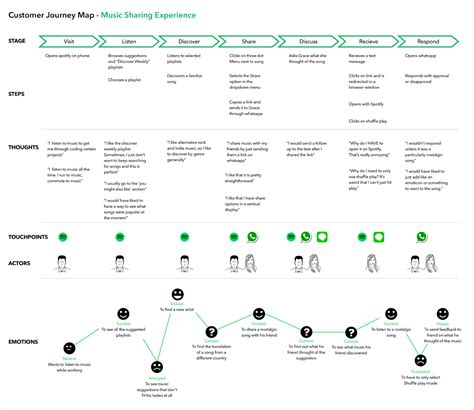
Developing a seamless and enjoyable user experience on your digital platform is a continuous process that requires ongoing testing and improvement. By regularly evaluating the user journey, identifying pain points and areas of improvement, and implementing enhancements, you can ensure that your website provides users with a satisfying and intuitive experience.
One crucial aspect of enhancing the user experience is conducting usability testing. This involves observing users as they navigate through your platform, gathering feedback on their interactions, and identifying any issues or frustrations they may encounter. By understanding how users engage with your website, you can gain insights into their behaviors, preferences, and pain points.
Usability testing can be conducted through various methods, such as moderated or unmoderated testing, remote testing, or in-person sessions. These tests can provide valuable feedback on aspects such as website navigation, page load times, clarity of content, and overall user satisfaction. By analyzing the data gathered from usability testing, you can identify areas that need improvement and make informed decisions for enhancing the user experience.
It is also essential to continuously monitor user engagement metrics, such as bounce rate, time on page, and conversion rates. These metrics can provide insights into how users are interacting with your website and highlight areas that may require attention. For example, a high bounce rate on a particular page may indicate that users are not finding the information they need or are experiencing difficulties navigating to the desired content.
In addition to monitoring metrics, actively seeking user feedback through surveys, feedback forms, or user testing sessions can provide valuable insights into their satisfaction levels and areas for improvement. By collecting and analyzing this feedback, you can prioritize enhancements that align with user expectations and preferences.
Furthermore, staying updated with industry trends and best practices can help inform decisions for enhancing the user experience. By benchmarking your website against competitors in your industry and examining successful case studies, you can gain inspiration and insights for improving your own platform.
| Benefits of Continuous User Experience Testing and Improvement |
|---|
| 1. Enhanced user satisfaction and loyalty |
| 2. Increased conversion rates and customer engagement |
| 3. Improved brand reputation and perception |
| 4. Higher search engine rankings and visibility |
| 5. Better alignment with user expectations and preferences |
FAQ
How can I improve the user experience on my website?
There are several ways to enhance user experience on your website. Firstly, make sure your website is easy to navigate with a clear and intuitive menu. Secondly, optimize your website's loading speed to ensure a smooth browsing experience. Additionally, use responsive design to make your website accessible on different devices. Finally, provide valuable and relevant content for your users, and make it easy for them to contact you or make a purchase.
Why is user experience important for my website?
User experience plays a crucial role in the success of a website. When users have a positive experience on your website, they are more likely to stay longer, explore more pages, and take the desired actions, such as making a purchase or subscribing to a newsletter. Good user experience also leads to higher customer satisfaction, increased trust in your brand, and repeat visits. Ultimately, focusing on enhancing user experience can contribute to higher conversions and improved business results.
What are some common mistakes to avoid when designing a website for better user experience?
When designing a website for better user experience, it is important to avoid common mistakes such as cluttered layouts and excessive use of pop-ups or ads that can distract users from the main content. Lack of mobile optimization is another mistake to avoid, as more and more users browse websites on their smartphones and tablets. It is also crucial to ensure that your website's forms are easy to fill out and don't require too much unnecessary information. Lastly, slow loading times and broken links should be addressed to provide a seamless browsing experience.



